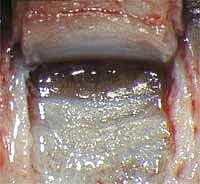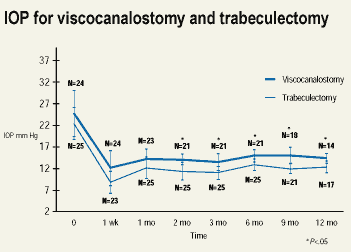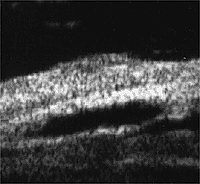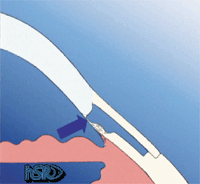Viscocanalostomy debated as ‘prime-time’ procedure
Some surgeons are wary of adapting it without a proven need or direct comparison with trabeculectomy.
Viscocanalostomy has entered the United States, and surgeons have taken up the debate of the value of the procedure, the patient groups it could serve and how to assess if it works better than trabeculectomy.
The debate brings up issues of the value of new surgical techniques and adjunct medicines such as antimetabolites, as well as the value of acting conservatively when adopting new procedures.
Eve J. Higginbotham, MD, told Ocular Surgery News that she decided not to perform viscocanalostomies because of the lack of success with a similar procedure, the nonpenetrating trabeculectomy. She tried these as a resident and said she abandoned them for two reasons — their difficulty and the lack of long-term success.
As a practitioner at the University of Maryland-Baltimore, she has kept a skeptical view on viscocanalostomy.
“I haven’t jumped on this bandwagon,” she said. “We need to have long-term data before we consider any procedure ready for prime time.”
Dr. Higginbotham moderated a session of the glaucoma subspecialty day of the American Academy of Ophthalmology, and at that session Roberto G. Carassa, MD, of Milan, Italy, spoke about the procedure.
He concluded that viscocanalostomy has a good short-term success rate with low intraocular pressure (IOP) and minor complications, compared with trabeculectomies. The technique is more time consuming but requires fewer postoperative visits, he said.
Because viscocanalostomy does not open the anterior chamber, it reduces the risk of infection, cataract, hypo-tony and shallowing. The absence of external filtration avoids bleb formation and related discomfort, as well as reduces the risk of late infection. The procedure’s success is independent of external scarring, the leading cause of failure in trabeculectomy.
Complications are minor compared with trabeculectomy, he said. However, the outcome seems somehow poorly predictable, giving rise to a significant number of initial failures.
|
|
Evolving procedure
Glaucoma surgeons in the United States have different opinions on the value of this procedure. Alan L. Robin, MD, of Baltimore, adopted the procedure after working with its primary inventor, Robert Stegmann, MD, of South Africa.
“Viscocanalostomy is an exciting procedure,” Dr. Robin said. But the American community’s initial interest died out because Dr. Stegmann performed the procedure a specific way in a unique population.
In South Africa, Dr. Stegmann’s population consisted of previously untreated eyes in which he did only a viscocanalostomy. Patients could not use antimetabolites.
As a result, “Many Americans saw or thought of this as a replacement for trabeculectomy in people who have been on multiple medications, had prior surgery and shunts. It isn’t. That’s what threw people aback,” Dr. Robin said.
But the procedure evolved in the hands of American surgeons, which explains the rekindled interest in the United States, he said.
Dr. Stegmann originally described making a parabolic scleral flap, but surgeons who have adopted the procedure make a variety of shapes. Dr. Stegmann used Healon 5 (Pharmacia & Upjohn; Peapack, N.J.), while surgeons use Healon GV or Viscoat (Alcon; Fort Worth, Texas) instead. (Note: Healon 5 is not available in the United States.)
Dr. Robin has also adopted anti-metabolites.
“All those complications (from antimetabolites) were associated with full thickness filtration surgery,” Dr. Robin said. “If you don’t go full thickness you don’t have the same problems.”
Evangelism
 ---"Sclero-descemetic window" represents the site of aqueous outflow.
---"Sclero-descemetic window" represents the site of aqueous outflow.
More conservative physicians say trabeculectomies with antimetabolites or releasable sutures work well enough that surgeons do not need to flock to try unproven filtration procedures.
George Spaeth, MD, of the Wills Eye Hospital of Philadelphia, said that releasable sutures are a reliable method that does not cause astigmatism and have a low infection rate.
These sutures allow a surgeon to titrate the effect by keeping a high pressure initially and lowering it.
“The incidence of flat anterior chambers in standard guarded filtration procedure is 1% to 2% now. It’s very low. Yet, flat anterior chambers are one of the major reasons why folks justify using the so-called newer procedures, such as viscocanalostomy,” he said.
Rationale to justify viscocanalostomy is oversimplified, Dr. Spaeth said. Like antimetabolites, the procedure was accepted with very little science to support it.
“The proponents of this are evangelizers and are not scientists, by and large,” he said. “There’s a place in the world for evangelism, but it doesn’t usually lead to scientifically valid results.”
Despite the criticism, Dr. Robin said that viscocanalostomy will vie with trabeculoplasty as either a first- or second-line procedure for people with uncomplicated primary open-angle glaucoma.
“If your goal is to have a pressure below 10, then viscocanalostomy isn’t the procedure of choice,” he said. “The mean IOP after viscocanalostomy is in the low- to mid-teens. To go lower really is not something that the procedure does. You need a filter with mitomycin C.”
Viscocanalostomy is more useful in a patient without prior cataract or filtering surgery who needs a pressure between 12 mm Hg and 14 mm Hg. Dr. Robin also has used it in patients with nanophthalmos and Sturge-Weber syndrome.
Glaucoma doctors are just too conservative, Dr. Robin said. Trabeculectomy, argon laser trabeculoplasty and mitomycin C all started with use by private practitioners, instead of by glaucoma doctors at academic centers.
However, all the doctors agreed that they need to see more properly done studies comparing viscocanalostomy and trabeculectomy.
Dr. Carassa said, “For these reasons, viscocanalostomy, despite these appealing results, must be still viewed as an experimental surgery. Further studies are required to define its role in the management of glaucoma.”

For Your Information:
- Eve J. Higginbotham, MD, practices at the University of Maryland – Baltimore, Department of Ophthalmology, 22 S. Greene St., Baltimore, MD 21201-1595; (410) 328-5929; fax: (410) 328-6346; Dr. Higginbotham did not disclose whether she has a direct financial interest in any of the products mentioned in this article or if she is a paid consultant for any companies mentioned.
- Roberto G. Carassa, MD, practices at HS Raffaele, Olgettina 60, Milan, 20132, Italy; (39) 02-2643-3598; fax: (39) 02-2641-2912. Dr. Carassa has no direct financial interest in any of the products mentioned in this article, nor is he a paid consultant for any companies mentioned.
- Alan L. Robin, MD, can be reached at 6115 Falls Road, 3rd Floor, Baltimore, MD 21209-2226; (410) 377-2422; fax: (410) 377-7960; e-mail: arobin@compuserve.com. Dr. Robin has no direct financial interest in any of the products mentioned in this article, nor is he a paid consultant for any companies mentioned.
- George Spaeth, MD, practices at Wills Eye Hospital, 900 Walnut St., Philadelphia, PA 19107-5598; (215) 928-3197; fax: (215) 928-0166. Dr. Spaeth has no direct financial interest in any of the products mentioned in this article, nor is he a paid consultant for any companies mentioned.


